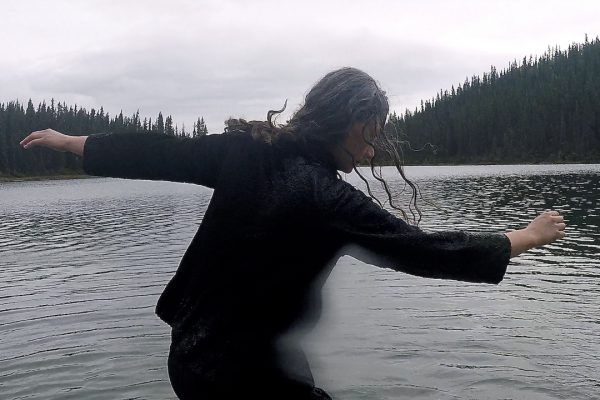A few months ago, I stood in the middle of the room where an exhibit I had curated was just put up at Dance Collection Danse Gallery in Toronto. It is called It’s About Time: Dancing Black in Canada 1900-1970. As I looked around and took in the room, I thought, “Wow, it would have been really great to know this history when I was a young dancer.” It would have been great if my teachers had known this history, my professors, my dancing friends, my family. Standing in the middle of that room, I let history hug me, enfold me, take me in.
There was a moment for me in my dancing life, probably in my early twenties, when I felt like there was something missing in how I understand my experience as a mixed heritage, Black dancer in Toronto, then Vancouver and Montréal. I realized that all of my points of reference for Black people dancing were from somewhere else – from outside of Canada – especially during the eras that I was most interested in artistically – the 1960s and early 70s and modern and postmodern dance histories. Over time, I have had the good fortune to access histories that have been recorded, and I am indebted to those who have done this work. But there is still so much more to do and the work must be more widely disseminated.
I don’t think that I was able to really articulate how this impacted me; I don’t even know if I was completely aware of how uncomfortable I often felt with the inability of so many people around me to discuss my Blackness in a way that I felt comfortable with. This is different from not being able to talk at all; there was conversation, but somehow I did not have the information I needed to make decisions and have perspectives that were informed with a knowledge of my local history. In order to talk or even to think about my perspective, I had to place myself, imagine myself on a historical trajectory somewhere other than where I was. What does this do to a person’s presence?
With this in mind, I want for BIPOC (Black, Indigenous, People of Colour) dancers – of all ages – to see themselves reflected on studio walls, in history books, in conversations and criticism, in videos that are watched, in public school curriculum, post-secondary and graduate education and in professional environments. I want BIPOC dancers to feel considered, respected and seen for who they want to be, not for who someone else thinks they should be. What I don’t want is for BIPOC dancers and artists to feel visible when it is convenient for someone else for them to be visible.
As the Truth and Reconciliation, Black Lives Matter and other activist movements continue to facilitate an ever so slowly unfolding conversation and education for so many Canadians, I want those in positons of power in dance environments to ask BIPOC people “What can you do? What do you want to do? What can I do for you?” instead of asking or thinking “What can this person do for me?” This last question is another displacement and I feel like I see it happen too often. Think beyond the board seats and advisory panels, the equity chats and Black History Month.
I want people to see what happens when BIPOC people are given the space and opportunity to be present, on their own terms, in history, in their hometowns, studios, classrooms, high school and professional theatres. I want to see what this does to a person’s presence.
Happy anniversary, The Dance Current! Thanks for making space for so many voices over the years. It has been a pleasure to contribute my own.





